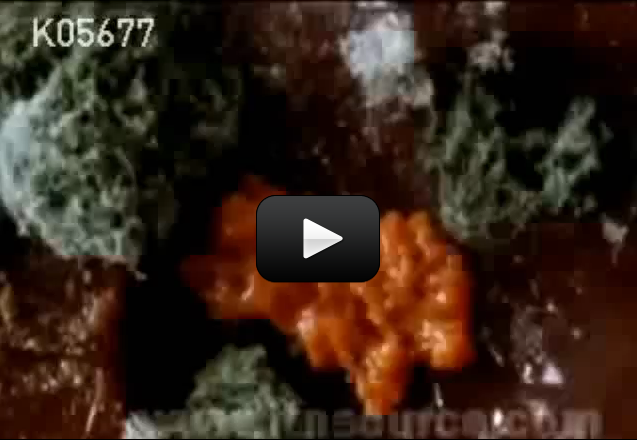This type of slime Physarum Polycephalum is called the “many-headed slime”. This slime likes shady, cool, moist areas like you’d find in decaying logs and branches. Slime (or slime mold) is a word used to define protists that use spores to reproduce. (Note: Slime used to be classified as fungi.)
Real slime lives on microorganisms that inhabit dirt, grass, dead leaves, rotting logs, tropical fruits, air conditioners, gutters, classrooms and laboratories. Slime can grow to an area of several square meters.
Slime shows curious behaviors. It can follow a maze, reconnect itself when chopped in half, and predict whether an environment is good to live in or not. Scientists have battled with the ideas that at first glance, slime appears to be simply a “bag of amoebae”, but upon further study, seem to behave as if they have simple brains, like insects.
Slime can be either a plasmodial slime, a bag of cytoplasm containing thousands of individual nuclei, or a cellular slime which usually stays as individual unicellular protists until a chemical signal is released, causing the cells to gather and acts as one organism.
[am4show have=’p8;p9;p11;p38;p92;p27;p54;p78;’ guest_error=’Guest error message’ user_error=’User error message’ ]
Slime feeds by surrounding its food completely and secreting enzymes to digest it. If the slime dries out before its finished eating, it will form a hard tissue shell to protect the dormant slime until the weather turns wet again. The cool part is that the slime will continue searching for food once it hydrates and softens up. When slime can’t find food, it will begin the reproductive phase. Spores form from the mitosis phase and are spread by wind currents. Spores can remain formant for years if the conditions are unfavorable.
Scientist have discovered that physarum polycephalum (orange slime) seems just as intelligent as some insects! A team researchers set up a maze (made of agar) and found that the slime found the shortest possible path to the food.
Another team of scientists are working on bio-computing devices, which use slime instead of semiconductors. The scientists found that slime reacts consistently to certain stimuli. (If they poke it here, it moves to the left…) This team is also figuring out how to precisely point and steer slime using light and food sources.
What this means is that you’ve got a creature that will always emerge from a maze the same way when dropped in at random, is direction-controllable, and always reacts to stimuli the same way. Sounds like the inner workings of a computer, doesn’t it?
[/am4show]


Yes, culture kits are available online but, we don’t have specific recommendations. Working with live slime mold is beyond the scope of our program.
Thank you Aurora for telling me! I have one more question. Can you buy one online?
We don’t have evidence that it can move stuff on purpose, but it is possible that small objects such as bits of leaves may go along for a ride. Yes, it can squeeze through small spaces. Slime mold usually avoids substances such as salt and baking soda, but it will cross over salt to reach food. However, if you covered it in salt or baking soda, it most likely would not survive. It is typically yellow or orange in color. It has been measured travelling up to 5 centimeters per hour (cm/h). Yes, it does conduct electricity.
Can this slime move stuff? Can it squeeze through the smallest spaces? Can it die with cooking salt/baking soda? Can it be green? Blue? Black? Is it fast? Can it conduct electricity?